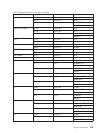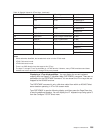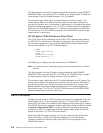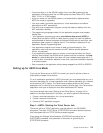Some Practical Examples
This topic discusses using TCP/IP Telnet VTxxx emulation with the following clients:
DEC MicroVAX
Sun Sparc Classic
HP705 Apollo
DEC MicroVAX VT100 Full-Screen Telnet Client
The VT100 Telnet client provided by the Wollongong MicroVAX TCP/IP package
was tested to the AS/400 VTxxx Telnet server. Although this testing was by no
means thorough, the connection appeared to work satisfactorily providing the Telnet
session was initiated in the following way:
$ TELNET
TELNET> xon
Data flow control characters processed locally.
TELNET> promptmode
Will show 'TELNET>' prompt when connected.
TELNET> open 9.4.73.251
Trying 9.4.73.251.....
Connected to 9.4.73.251
Escape character is '|]'.
An AS/400 sign-on display was then received from SYSNAM123.
Note: Without xon turned on, the AS/400 display was corrupted.
The Telnet session from the MicroVAX could either be ended by using SIGNOFF
ENDCNN(*YES) or by Entering QUIT or CLOSE at the
TELNET
prompt. To obtain
the Telnet prompt, Enter the ’escape character’ (Ctrl-] by default). ’Promptmode’
must be enabled to obtain the Telnet prompt.
The connection was initiated from a VT320 terminal attached to the MicroVAX. The
results may be different for different terminal types and the previous information is
provided for guidance only. During testing, a requirement for a change to the default
keyboard map became apparent because the F6 function key on the VT320
terminal being used appeared to perform a local function (Interrupt). The
SETVTMAP command or the CHGVTMAP command maps this function to another
key if it were not possible to override this key being a local function.
Sun Sparc Classic VT100 Full-Screen Telnet Client
The VT100 Telnet client provided by the Sun UNIX TCP/IP package was tested to
the AS/400 VTxxx Telnet server. Although this testing was by no means thorough,
the connection appeared to work satisfactorily using the default Telnet command
parameters:
# TELNET
TELNET> open 9.4.73.251
Trying...
Connected to 9.4.73.251
Escape character is '|]'.
An AS/400 sign-on display was then received from SYSNAM123.
Chapter 6. Telnet Server 209


















